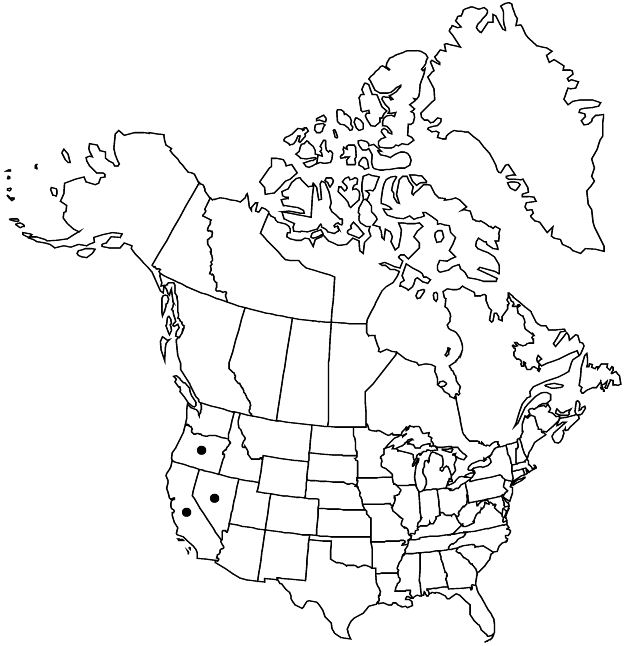Viola purpurea var. integrifolia
Mentzelia 1: 8. 1976.
Plants 1.5–9(–12) cm. Stems erect, mostly buried, not much elongated by end of season, puberulent. Leaves: basal: 1–4; petiole 1.9–7.5 cm, puberulent; blade purple-tinted abaxially, green adaxially, lanceolate or ovate to ± orbiculate, 0.8–3.1 × 0.4–2.3 cm, ± fleshy, base cordate, subcordate, or truncate, margins ± crenate to irregularly repand-dentate or entire, apex obtuse, abaxial surface puberulent, adaxial surface sparsely puberulent; cauline: petiole 1.3–3 cm, puberulent; blade ovate to oblong-lanceolate, 1.2–3.1 × 0.3–1.4 cm, length 1.2–5.7 times width, base truncate to attenuate, margins usually entire, sometimes sinuate, apex acute to obtuse, surfaces similar to basal blades. Peduncles 1–9 cm, puberulent. Lowest petals 8–11 mm. Capsules 5–7 mm. Seeds dark brown, 2–2.9 mm.
Phenology: Flowering May–Aug.
Habitat: Dry, red fir (Abies magnifica in California) and pine forests to timberline, sandy, gravelly, or rocky soil, sometimes on serpentine
Elevation: 1200–2600 m
Distribution

Calif., Nev., Oreg.
Discussion
Selected References
None.